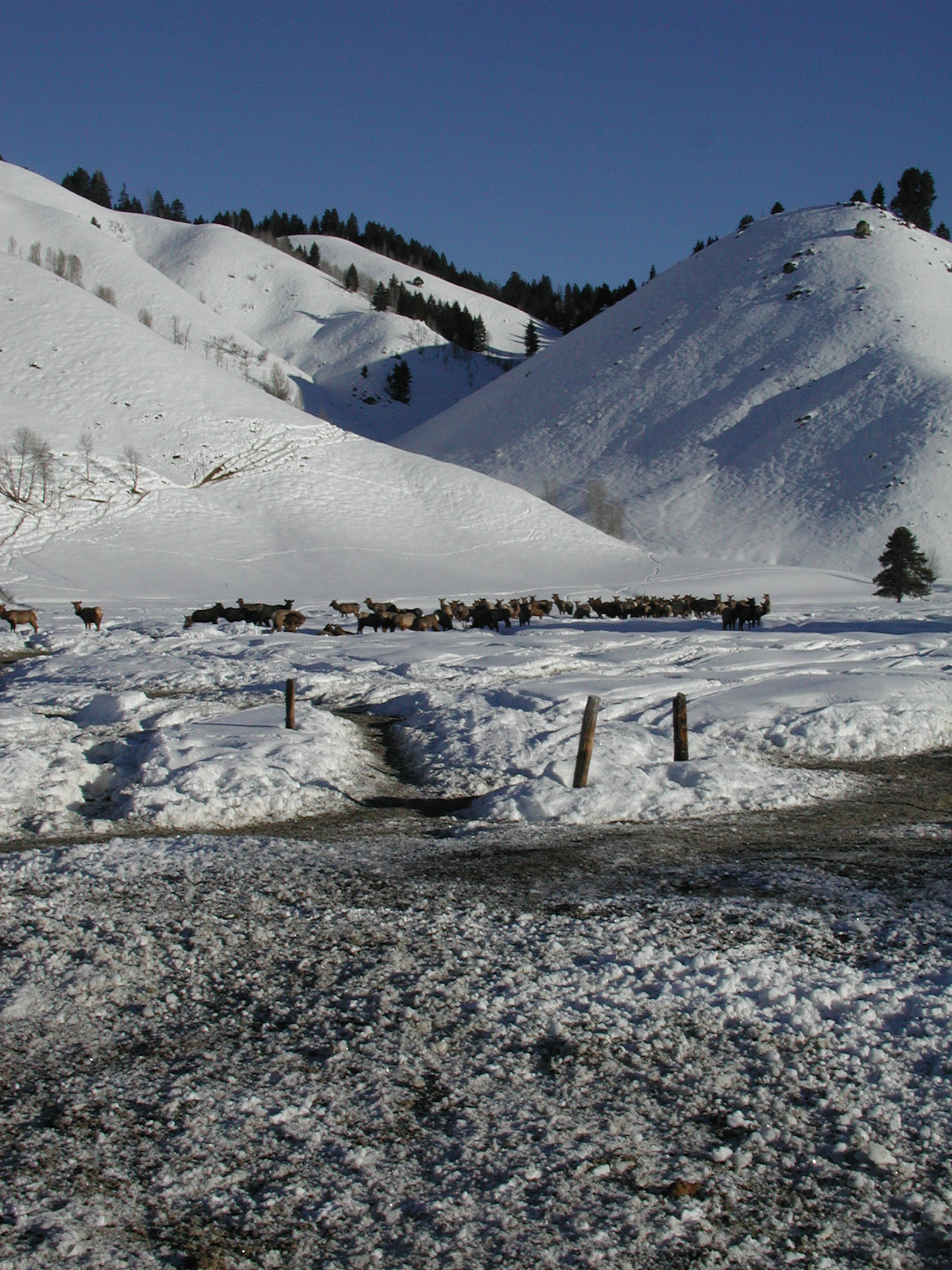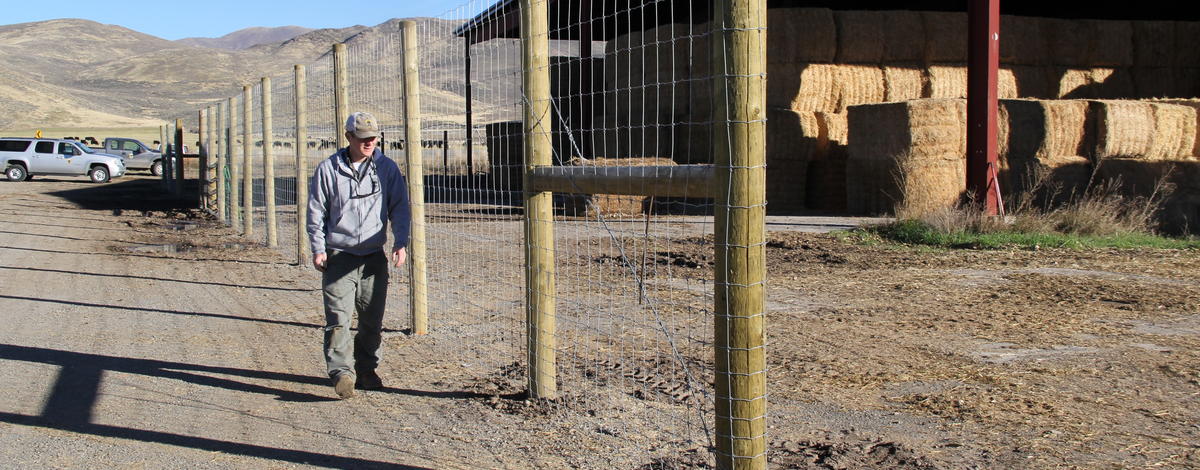Most hunters agree Idaho’s burgeoning big game populations are a good thing, but when they show up in unwanted places, they become too much of a good thing.

That’s the case in Blaine County and elsewhere when herds of deer, elk and pronghorn descend onto agriculture lands and become a nuisance to land owners. Fish and Game is currently addressing those problems by protecting crops for farmers and ranchers.
It’s not new for the agency, but preventing crop depredation is getting more emphasis and funding thanks to partnerships. Fish and Game spent about $500,000 in 2016 to build fencing around haystacks to discourage elk and deer from helping themselves this winter.
That’s nearly a 10-fold increase over recent years, accordingly Sal Palazzalo, F&G’s private lands program coordinator.
Not that the problem has increased 10-fold, Palazzalo said, but Fish and Game did see a spike in payments for crop damage last winter when payments statewide jumped from $359,100 compared with $250,000 during an average year.
It’s likely a combination of several back-to-back mild winters that bolstered deer and elk herds while also allowing many to remain in the mountains because deep snow didn’t drive them into the valleys.
Although last winter snowfall was average in terms of long-term averages, but it was higher than in previous years, which pushed animals down onto ranches and farms.
“All those factors came together last year and led to a significant increase in complaints from land owners,” Palazzalo said.
Fish and Game has long had a special fund to pay farmers and ranchers for crop loss, and it also provides temporary or permanent fencing materials to protect haystacks, but this year it went one step further and helped build permanent enclosures to protect haystacks.
That $500,000 is expected to pay for between 80 and 100 of enclosures statewide.
“In response to last winter, the department said ‘let’s do a big push and help those folks out,’” Palazzalo said.
For F&G Landowner/Sportsman Coordinator John Guthrie, it was an opportunity to further the cooperation and teamwork he’s experienced with farmers and ranchers in Blaine County.
“After last winter, we had a pretty good idea where the biggest hot spots were and who would benefit from the enclosures,” Guthrie said.
One of them was the 4,300-acre Picabo Ranch, which had up to 600 elk on its properties last winter.
“It was unbelievable when they came,” ranch manager Elliott Nachtman said. “And when they came, they stayed.”
Nachtman and ranch hands fought a losing battle keeping the elk away from the haystacks. He pointed out it’s not just the cost of hay being lost, it’s extra man hours dealing with elk, and also damage to haystacks when elk eat the lower bales and tip over stacks and breaking up bales.
“We were working 24-hour hours a day and hazing elk every two hours to keep them at bay,” he said. “When you’re out all night in 14-below-zero weather, it was a lot of work, I can tell you that.”

Fish and Game worked with the county on a $40,000 grant funded by Blaine County’s Land, Water and Wildlife Program that helped pay for the construction costs of 14 stack-yard enclosures on 12 different landowners’ properties, including two at Picabo Ranch.
“It wouldn’t have happened without the landowners’ cooperation,” Guthrie said.
While winter is just arriving in the Picabo area, Nachtman expects fewer problems now that haystacks are safely behind fences.
“The elk aren’t going to be able to penetrate the stacks, and we’ve had a chance to get those local elk out, and that’s key,” he said. “I think we have a great solution to the problem.”
While the project is focused on protecting haystacks, there are other benefits, Guthrie said. If elk can’t find an easy meal, they’re more likely to stay out of the valleys and away from highways where they can be a serious traffic hazard.
Photo information
Photo credit: Idaho Fish and Game
Suggested captions: Elk herds migrating from the mountains in the valleys during winter can find haystacks and other crops too tempting to resist.
Fish and Game's landowner/sportsman coordinator John Guthrie inspects fencing that will block elk from haystacks.

